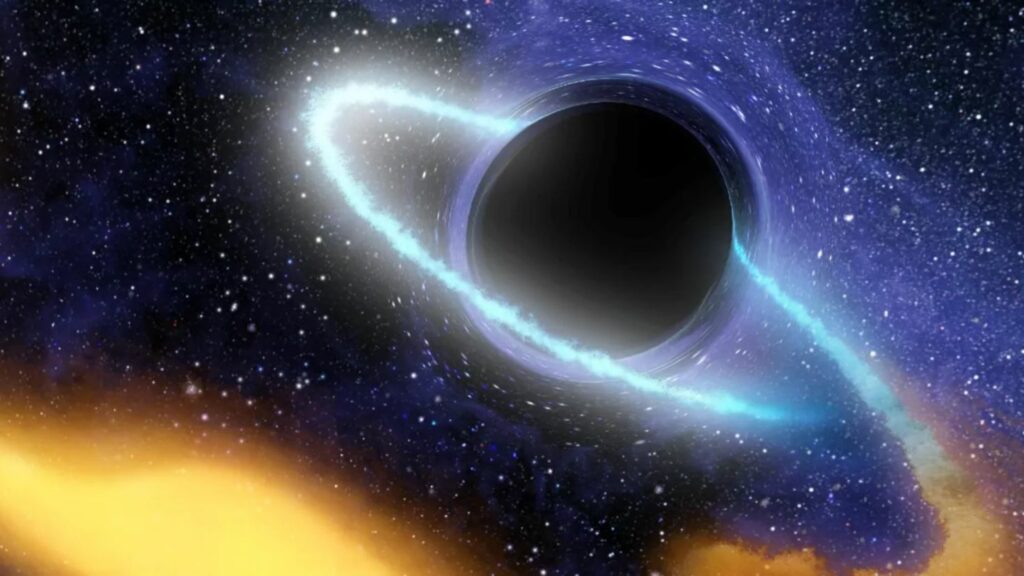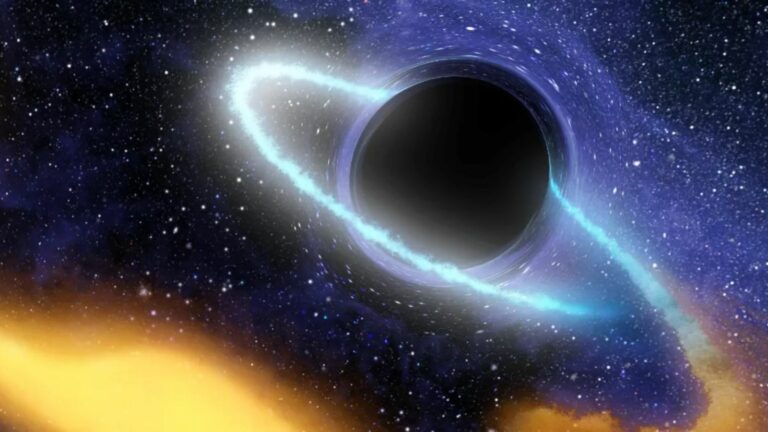Unusual Stellar System Presents Potential Evidence of a Rare “Dark Matter Star”
Recent research suggests that within a remote star system, a star similar to our sun orbits an unseen object that could potentially be the first known example of a “boson star” composed of dark matter. Initially believed to be a straightforward case of a star circling a black hole, the enigmatic nature of this system has prompted two astronomers to challenge that assumption. They propose that the available evidence indicates a far more peculiar scenario: the existence of an unseen type of star formed from imperceptible dark matter. Although their findings have yet to undergo peer review, their research was published on the preprint server arXiv on April 18.

The star system comprises a sunlike star and an enigmatic companion. The star itself possesses a mass slightly lower than that of the sun (0.93 solar masses) and exhibits a comparable chemical composition. Conversely, the mysterious companion is significantly more massive, weighing approximately 11 solar masses. These objects orbit each other at a distance of 1.4 astronomical units, akin to the average distance between Mars and the sun, completing a full orbit every 188 days.
The identity of the dark companion remains uncertain. While one possibility is a black hole, this hypothesis presents challenges. Black holes originate from the deaths of immensely massive stars, meaning that for this scenario to occur, a star similar to our sun must have formed alongside one of these colossal entities. While not entirely implausible, such an occurrence would require an exceptional degree of fine-tuning to bring about the desired alignment and maintain the orbital relationship for millions of years.
Alternatively, the researchers propose a more exotic explanation in their recent study. They suggest that the dark companion could be a conglomerate of particles constituting dark matter.
Dark matter constitutes an imperceptible form of matter that comprises the majority of mass in every known galaxy. Despite this prevalence, its true nature remains elusive. Many theoretical models assume that dark matter permeates galaxies in a smooth distribution, but alternative models allow for its aggregation.
One such model postulates that dark matter consists of a novel type of boson, which are particles responsible for carrying the fundamental forces of nature. For instance, a photon, serving as a boson, mediates the electromagnetic force. Although the Standard Model of particle physics recognizes only a limited set of bosons, there is theoretically no impediment preventing the existence of additional varieties.
These specific bosons would not exert forces, but they would still permeate the universe. Crucially, they would possess the capability to conglomerate into significant clusters. Some of these clusters might span entire star systems, while others could be considerably smaller. The smallest aggregations of bosonic dark matter could resemble stars, and they have been designated as “boson stars.”
Boson stars would be entirely imperceptible since dark matter neither interacts with other particles nor with light. Consequently, detection would rely solely on their gravitational influence on the surrounding environment, similar to a regular star orbiting a boson star.
The researchers highlight that a simple model involving bosonic dark matter could generate a sufficient number of boson stars to account for the observations derived from the Gaia satellite data. Substituting a postulated black hole with a boson star could potentially explain all of the observational data.
While the probability of this discovery truly representing a boson star is low, the authors stress the need for further observations. The unique nature of this system presents an exceptional opportunity to investigate the behavior of strong gravity, providing insights into the validity of Einstein’s theory of general relativity. Additionally, if it indeed constitutes a boson star, this system offers an ideal experimental configuration for exploring and refining our models of boson stars, ultimately facilitating a glimpse into the obscure recesses of the universe.
Do not forget to share your opinion with us to provide you with the best posts !




0 Comments